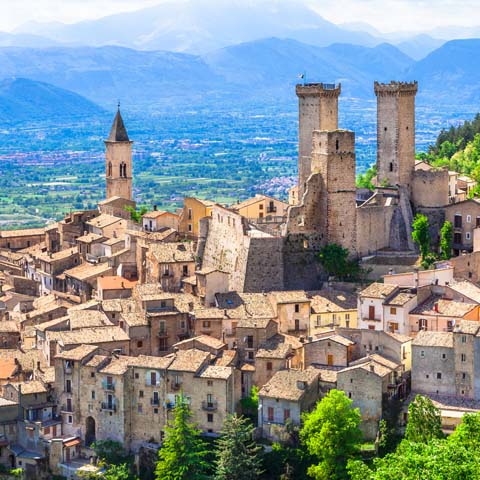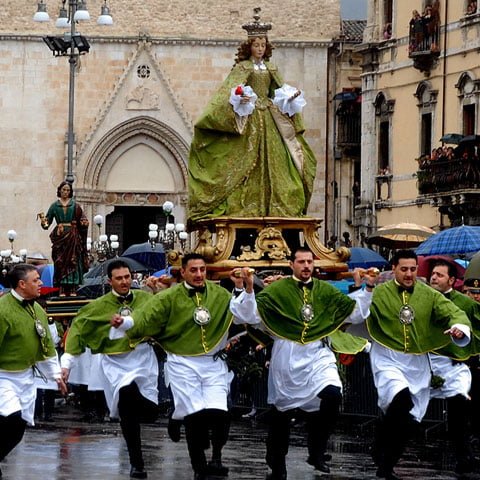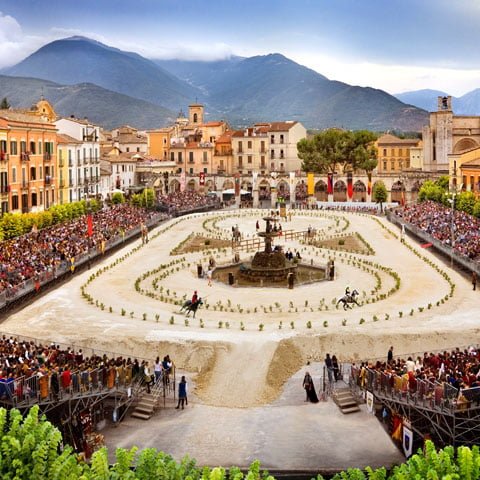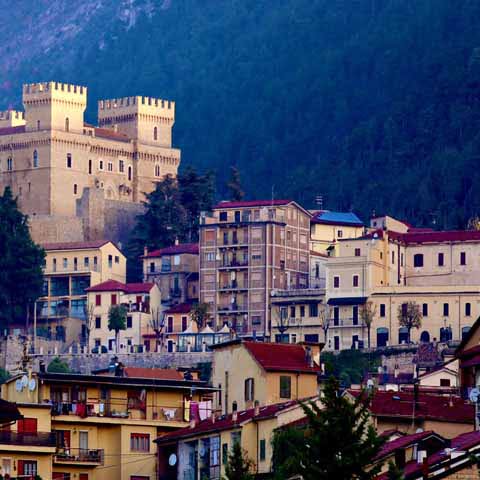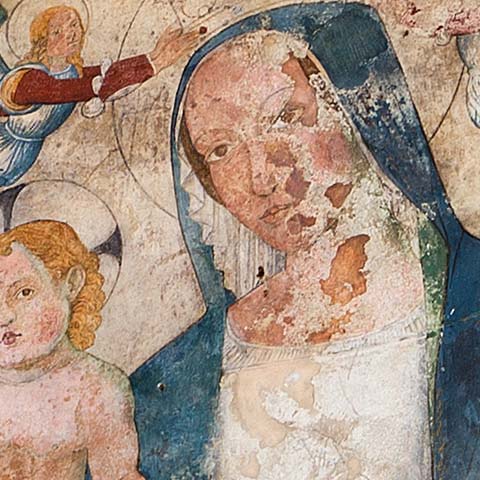Abruzzo – Culture Guide
Abruzzo is truly a hidden gem of Italy with less traveled roads that portray deep rooted authentic Italian customs in architecture, literature, music, and cinema, making the region a must-see for travelers.
Abruzzo is divided into four provinces of L’Aquila, Teramo, Pescara, and Chieti, and among these provinces are twenty of the most beautiful villages in Italy. Each province adds something special to the overall culture of the region.
ART AND ARCHITECTURE
Deemed the greenest area in Italy with miles and miles of land protected as a national park, this quiet region tucked into the mountains is brimming with culture highly influenced by its history. Abruzzo’s history began with craftsmen whose dedication to their craft became the literal building blocks of the region.
The Abruzzo culture equates an artist with a craftsman. The region’s tools of craftsmanship are varied, including precious metals, lace, copper, and wrought iron. The grand architecture is example enough of this as Abruzzo features art in the form of castles, monasteries, and medieval villages. Stone and wood carvers, master goldsmiths, and blacksmiths built the town one magnificent building at a time.
The city of L’Aquila is home to one of the grandest churches in the area, the Basilica of San Bernardino. It was built in the mid to late 1400s in honor of St. Bernardino of Siena and the building houses the saint’s body to this day in the mausoleum. The interior of the church is laid out in the shape of an Italian cross and is a stately work of art with intricate hand-painted scenes on high-domed ceilings, majestic gilding, and a grandiose organ that serves as the crown jewel of this cathedral. The entire structure, inside and out, is a tribute to the fine craftsmanship of Abruzzo’s history and culture.
The Teramo Cathedral is one of the Teramo province’s most notable landmarks. The Roman Catholic cathedral boasts Romanesque architecture that is just slightly more beautiful than its mountainous backdrop. The sky-reaching bell tower, altar, and historical religious statues are just some of the unique architecture that make this structure a must-see.
Pescara offers one of the most breathtaking views of the city and Adriatic Sea when strolling down the Ponte del Mare, a pedestrian bridge over the Pescara River. The view of the sea at dawn, dusk, or during the day is simply unparalleled with the blue expanse melting into the sky on the horizon. After nightfall, the cable-stayed bridge offers spectacular views of evening lights of the businesses and boats along the river, as well as a nearby amusement park.
One of Chieti’s most popular landmarks is the Museo Archeologico Nazionale d’Abruzzo. The building, dating back to the 1830s, is a neoclassical villa that sits atop a hill, offering a grandiose view of Abruzzo’s mountains. The Art Nouveau-style structure was a school before it became a museum in 1959. On the outside, the simple but well-crafted brick exterior features beautiful arched windows that offer a breathtaking view of the countryside. On the inside, the museum offers visitors a view into the ethnic and topographical aspects of Abruzzo’s history. An archeological library of more than 13,000 books can also be found here. While the building itself is majestic, the tradition found inside tells a beautiful love story of the early inhabitants of Abruzzo and the land that sustained them.
Grand architecture and fine art abound in Abruzzo, tucked into cities, sprinkled along the mountainside, and spanning the Adriatic Sea.
LITERATURE
The remoteness of the region is a writer’s dream with quiet solitude and gorgeous scenery. As a result, Abruzzo was and still is home to writers that fuel their craft with the tradition and culture the area is famous for.
One of the greatest Italian writers of the 20th century, Gabriele D’Annunzio, who wrote both poetry and novels, was from Pescara. Known for his status as a war hero as well as his political ideals, D’Annuzio’s works were greatly influenced by his national pride. Many of his works remain popular in Italy to this day including the poem La pioggia nel pineto, “The Rain in the Pinewood”.
Ignazio Silone was another writer from Abruzzo whose works mainly consisted of novels and short stories. Following an initial career in politics, Silone became internationally regarded for his anti-fascist novels during World War II, which were written in exile. Silone returned to Italy after the war where he continued to write and was nominated ten times for the Nobel Prize in literature.
These men with their vision and talent left an indelible impression on Italian literature and inspired generations of future writers.
CINEMA
Cinematography is one of the most relevant industries in Abruzzo, invigorated by film companies from across the globe seeking out picturesque scenery for the stories they want to tell.
Most notably, L’Aquila province served as a filming location for several Spaghetti Westerns in the 1970s. Then in the 1980s, Ladyhawke, a Medieval fantasy film starring Michelle Pfeiffer, was shot in Abruzzo. More recently, The American, directed by Anton Corbijn and starring George Clooney was filmed in Sulmona.
The earliest movies filmed in Abruzzo had a domino effect in attracting other films to the region, primarily due to the beautiful architecture and duality of scenery, including majestic mountain ranges and the blue waters of the Adriatic Sea. As the industry continues to grow, it boosts Abruzzo’s economy and paves the way for film to continue flourishing in the region.
The Sulmona International Film Festival is dedicated to short films and also features film workshops and retrospectives. The festival supports up-and-coming directors with unique perspectives and a passion for the art of cinema.
About Abruzzo
